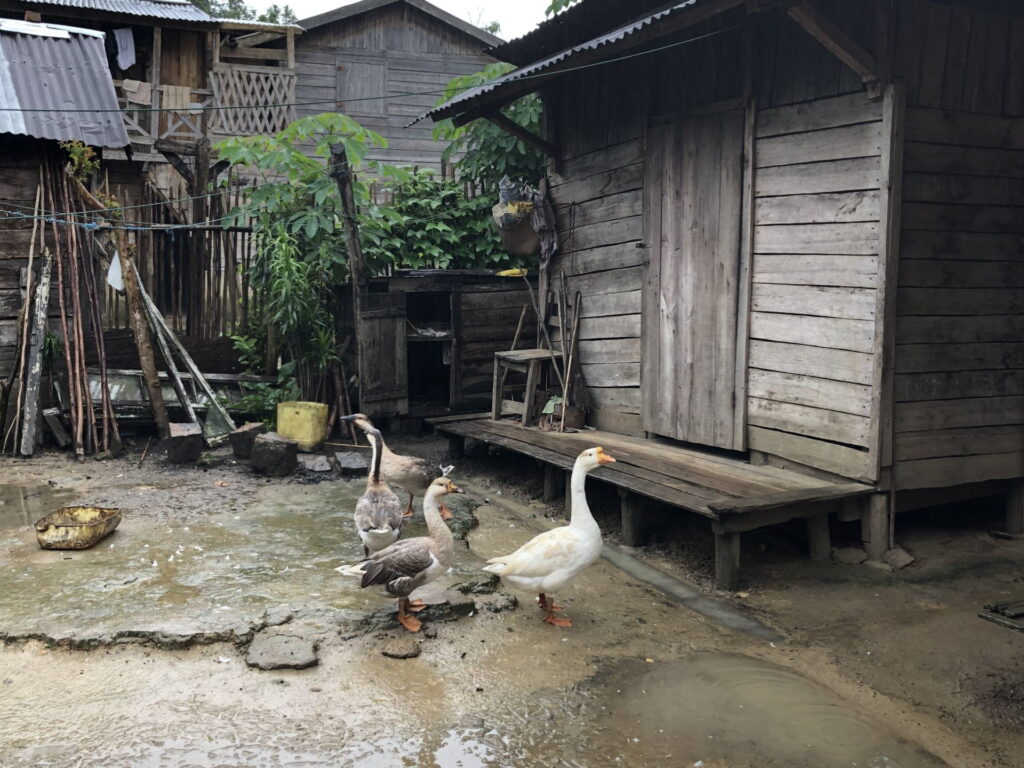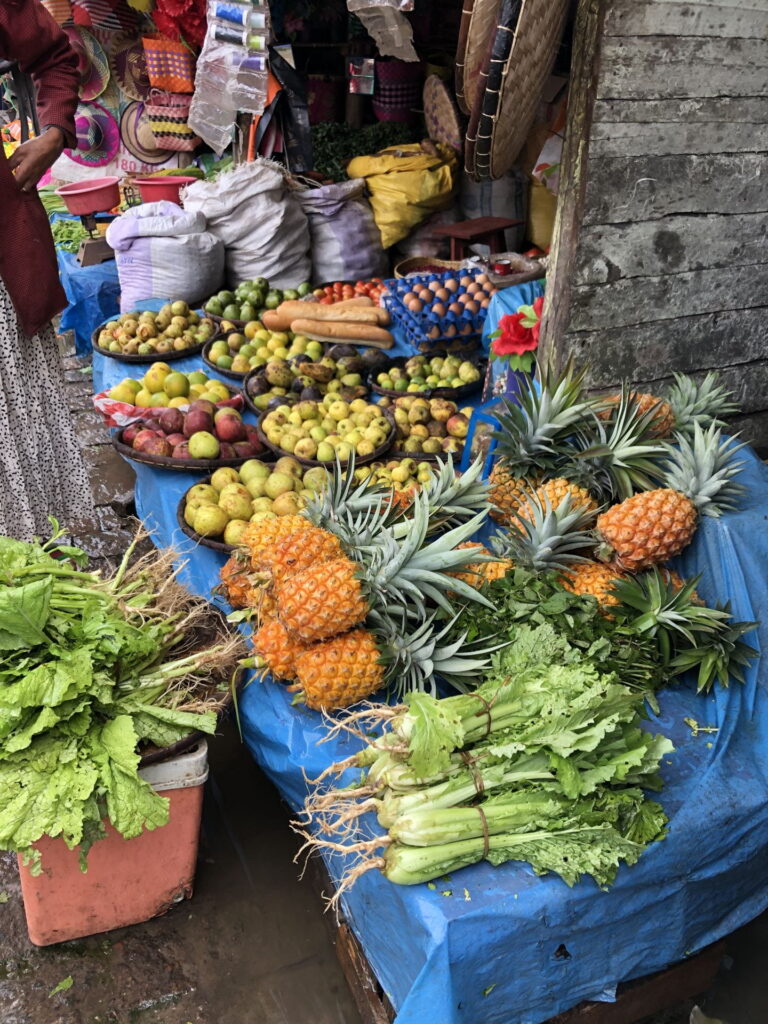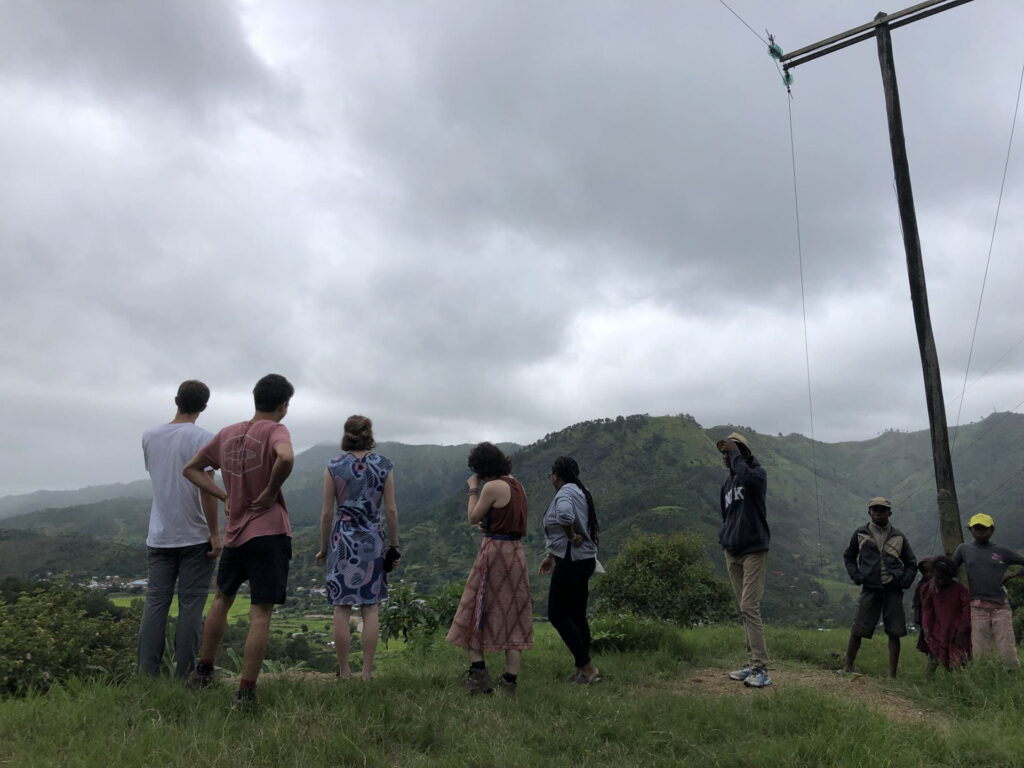
My host mother keeps a flock of geese in her front yard. They swarm around me honking in the early morning whenever I approach the water spigot to brush my teeth. She says it’s because they think I’m bringing them breakfast.

For the next two weeks I’ll be staying with a host family in Andasibe, a small town on the outskirts of the rainforest near the east coast. On the day that we arrived, I walked the entire length of the town in ten minutes. The town center consists of a single winding road lined with open-air market stalls selling everything from 30 pound bags of rice to spare motorcycle mufflers. Teenagers congregated around the community fuse ball table, waiting their turn and peering over the shoulders of their friends as they sweat in concentration. The entire town was out watching a soccer match in the pouring rain even though both teams were indistinguishable and covered in mud.
But to get to the heart of Andasibe, you have to keep walking until the cobblestone road turns to dirt then to leaf litter on the forest floor. The forest is what brings tourists thousands of miles across the ocean, what the townspeople use to build their houses, cook their food, treat their illnesses, and also what has brought me here today.
To start the second half of the semester, we’ll be conducting a behavioral study of brown lemurs, the most common and most active species during the day, and we’ll have to clamber through the forest once again to do it. With our datasheets in hand, damp and crumpled from the rain, the ten of us students made quite the spectacle following one very confused lemur as it went about its day. Craning our necks to see into the canopy above as the lemur jumped from tree to tree, we looked less like scientists are more like gawking museum-goers staring open-mouthed at a fresco on the ceiling.

I left the forest that day with twigs snagged in my hair and several mosquito bites on the center of my forehead. But just as I was dragging my feet and daydreaming about lunch, I heard those familiar high, wailing cries from the forest. The indri call to each other in the early morning, their voices travelling for miles into town and waking me while it’s still dark outside. The indri, a large, black and white lemur with a stubby tail, are emblematic of Andasibe and as a critically endangered species, they are a symbol of conservation. Fondly named babakoto in Malagasy, a timeless folk story tells of an indri saving a little boy who had climbed too far up a tree. Translated to “father of Koto,” the indri are still considered to be the father of mankind or the ancestors of the local people.
And listening to their calls, a mix between a howling dog and an oddly-human sigh, it is easy to see why these animals are revered and are taboo to harm. I read a faded plaque that looks just as old as the forest itself in the welcome center at the start of the trail: Lemures—the word the ancient Romans used to signify the spirits of the dead. While dramatic and a bit romanticized, I couldn’t help but agree that this name is completely fitting. Our guide tells us that the indri call to establish their territory and ward off intruders, but it would only take an active imagination to transform these loveable primates into lost souls crying out overhead.
Back in town, I fall into a comfortable routine. My host family wakes up at sunrise and lights up their charcoal stove to heat water. Mornings are always hazy with smoke from cooking fires around the neighborhood mixed with the perpetual drizzle in the air warning of another afternoon storm. I head to the town center for classes in a meeting room of a guest house. For lunch, we stop for soup at a hardware store with a tiny backroom smelling vaguely of cheese. Today, we’ve been paired with a Malagasy student to present our research results in French.
When I first arrived, I was surprised at how much the Malagasy disliked speaking French. It was just like how high schoolers hate whichever language they have drilled into them to pass a language requirement. Yet unlike high schoolers who may view their language classes as insignificant in terms of finding a job in the future, the Malagasy learn to speak French perfectly. They take French classes starting from elementary school as French is the language of instruction at every level of education and a requirement for any government or public position. The two-year-old boy in my host family can already name all the colors in French and sing Frère Jacques before even starting school.
The Malagasy learn to speak French like a textbook, and they do it begrudgingly at every step of the way. I realize now how difficult it must be to find a job, and how impossible it is to get an education, without it. Chatting with the Malagasy students on a long bus ride, I think of how French is a second language for both of us, how I chose to continue learning it all the way into college, but for them it wasn’t a choice. You can hardly turn on the TV, read a street sign, or enter a store without begin inundated with French media.
As the conversation lulls and we all turn to staring out the windows at the rolling green hills, the Malagasy students fill the silence by playing music on their portable speaker, singing along at the top of their lungs in a language I’m only just beginning to understand.
